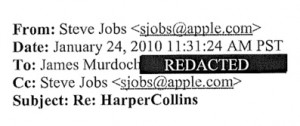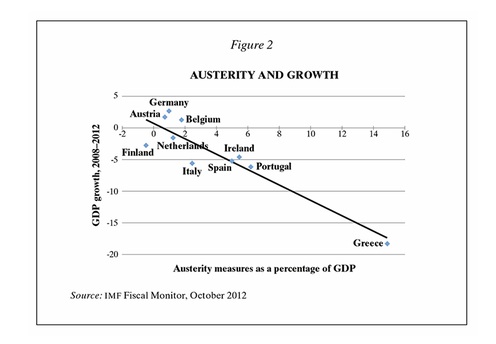Thatcher’s ‘achievement’
Lovely passage in John Gray’s Review of Jesse Norman’s book on Edmund Burke.
As a consequence of her leadership, the Conservative Party is in some ways weaker than it has ever been. Turning it into an instrument of her personal will, she triggered a coup that has left every subsequent Tory leader on permanent probation. Alienating Scotland, she virtually wiped out her party north of the border and planted a large question mark over the Union. Within England, her indifference to the human costs of de – industrialisation deepened the north-south divide. The result is a hollowed-out and shrunken party that faces huge obstacles in ever again forming a government. For someone who has been described as the greatest Conservative leader since Churchill, it’s quite a list of achievements. If you wanted to shake up Britain and change it beyond recognition, Thatcher was, of all postwar leaders, the one mostly likely to have this effect.
Paper(less) aeroplanes
Well, well. The US Air force is buying 18,000 32G wifi-only iPads and expects to save $50M as a result.
Using lightweight iPads instead of heavy paper flight manuals will amount to $750,000 annual savings on fuel alone, a spokesman for the Air Force’s Air Mobility Command said in an interview with James Rogers of The Street. And the AMC will no longer have to print those flight manuals either, which will save a whopping $5 million per year.
Major Brian Moritz, manager of the AMC’s electronic flight bag program, said the Air Force expects Apple’s iPad to help save $5.7 million per year, which would result in savings “well over $50 million” over the next 10 years.
“We’re saving about 90 pounds of paper per aircraft and limiting the need for each crew member to carry a 30 to 40 pound paper file,” Moritz said. “It adds up to quite a lot of weight in paper.”
Rogers was embedded recently with the U.S. Air Force and got to see Apple’s iPad in action. He revealed that the switch from paper manuals to the iPad could cut up to 490 pounds in weight from a C-5 aircraft.
They’ll never work on Ryanair flights, though. The pilots would have to turn their iPad manuals off for take-off and landing, and so wouldn’t have a clue which levers to pull.
Austerity and wilful blindness
Re-reading Paul Krugman on our rulers’ weird addiction to austerity policies that clearly aren’t working, I was struck by his comment that the failure to anticipate the banking crisis was “a relatively minor sin”. Economies are complicated, ever-changing entities; it was understandable that few economists realized the extent to which short-term lending and securitization of assets such as subprime mortgages had recreated the old risks that deposit insurance and bank regulation were created to control. But, says Krugman,
what happened next—the way policymakers turned their back on practically everything economists had learned about how to deal with depressions, the way elite opinion seized on anything that could be used to justify austerity—was a much greater sin. The financial crisis of 2008 was a surprise, and happened very fast; but we’ve been stuck in a regime of slow growth and desperately high unemployment for years now. And during all that time policymakers have been ignoring the lessons of theory and history.
It’s a terrible story, mainly because of the immense suffering that has resulted from these policy errors. It’s also deeply worrying for those who like to believe that knowledge can make a positive difference in the world. To the extent that policymakers and elite opinion in general have made use of economic analysis at all, they have, as the saying goes, done so the way a drunkard uses a lamppost: for support, not illumination. Papers and economists who told the elite what it wanted to hear were celebrated, despite plenty of evidence that they were wrong; critics were ignored, no matter how often they got it right.
The Reinhart-Rogoff debacle has raised some hopes among the critics that logic and evidence are finally beginning to matter. But the truth is that it’s too soon to tell whether the grip of austerity economics on policy will relax significantly in the face of these revelations. For now, the broader message of the past few years remains just how little good comes from understanding.
For those who believe that our democracies are still capable of managing societies in an equitable way, this resistance to evidence and reason must be pretty worrying. To those of us who suspect that the system is irretrievably rigged in favour of certain powerful interests, however, it just confirms our suspicions. This obduracy is a feature, not a bug.
Jobs to Murdoch: the merits of fixing eBook prices
The US Department of Justice is taking a keen interest in this email.
Reading it, one can see why.
HT to John Paczkowski at All Things Digital.
Crises of capitalism
Austerity = insanity
Einstein defined insanity as repeatedly doing the same thing and expecting a different outcome. I was reminded of this when reading Paul Krugman’s piece in the New York Review of Books.
The turn to austerity after 2010, however, was so drastic, particularly in European debtor nations, that the usual cautions lose most of their force. Greece imposed spending cuts and tax increases amounting to 15 percent of GDP; Ireland and Portugal rang in with around 6 percent; and unlike the half-hearted efforts at stimulus, these cuts were sustained and indeed intensified year after year. So how did austerity actually work?
The answer is that the results were disastrous—just about as one would have predicted from textbook macroeconomics. Figure 2, for example, shows what happened to a selection of European nations (each represented by a diamond-shaped symbol). The horizontal axis shows austerity measures—spending cuts and tax increases—as a share of GDP, as estimated by the International Monetary Fund. The vertical axis shows the actual percentage change in real GDP. As you can see, the countries forced into severe austerity experienced very severe downturns, and the downturns were more or less proportional to the degree of austerity.
There have been some attempts to explain away these results, notably at the European Commission. But the IMF, looking hard at the data, has not only concluded that austerity has had major adverse economic effects, it has issued what amounts to a mea culpa for having underestimated these adverse effects.
It’s patently obvious that the current policy of ‘austerity’ isn’t working, and yet our governments are hell-bent on continuing with it. Madness on stilts.
Imperial afterglow
The fault-line that runs through the Tory party over membership of the EU has opened up again in a most entertaining way. Cameron seems as helpless in dealing with his Europhobes as poor old John Major was in his day. I’ve often wondered why the issue is so toxic for members of Britain’s governing elites. The only explanation I can think of is imperial afterglow. Whole-hearted membership of the EU means accepting that Britain is just another country — like France, Germany or — Sacre Bleu! — Greece or Portugal! And that’s too unpalatable for a country that once had an empire on which the sun apparently never set. The same afterglow is what is currently driving the government to insist that Britain needs to spend £20 billion-plus on a new nuclear deterrent.
It’s pathetic, but it’s happening: authentic folie de grandeur. And at the taxpayers’ expense, naturally.
Our latest resident
A pair of housemartins have built an exquisite nest on our vine.
3D printing and bigger bangs
This morning’s Observer column.
Although there are already some very sophisticated applications of 3D printing in industry (in aircraft manufacture, for example), most of the stuff produced by 3D printing in the public domain looks pretty naff to the layperson’s eye. The Texas gun, for example, looks naive and unsophisticated when compared to, say, a Walther PPK. One can just imagine James Bond’s incredulous sneer if Q were to offer it to him.
But for those who have followed the work of Harvard scholar Clayton Christensen over the years, the sheer crudity of the printed object is what rings bells because it evokes the possibility of disruptive change…
LATER: It turns out that the Feds are onto it:
On Thursday, Defense Distributed founder Cody Wilson received a letter from the State Department Office of Defense Trade Controls Compliance demanding that he take down the online blueprints for the 3D-printable “Liberator” handgun that his group released Monday, along with nine other 3D-printable firearms components hosted on the group’s website Defcad.org. The government says it wants to review the files for compliance with arms export control laws known as the International Traffic in Arms Regulations, or ITAR. By uploading the weapons files to the Internet and allowing them to be downloaded abroad, the letter implies Wilson’s high-tech gun group may have violated those export controls.
“Until the Department provides Defense Distributed with final [commodity jurisdiction] determinations, Defense Distributed should treat the above technical data as ITAR-controlled,” reads the letter, referring to a list of ten CAD files hosted on Defcad that include the 3D-printable gun, silencers, sights and other pieces. “This means that all data should be removed from public acces immediately. Defense Distributed should review the remainder of the data made public on its website to determine whether any other data may be similarly controlled and proceed according to ITAR requirements.”





